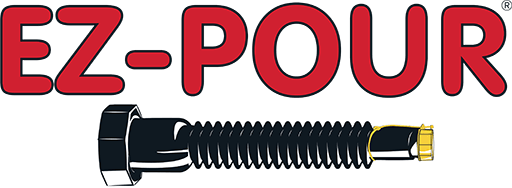Gas cans are not what they used to be. In 2009, the EPA instated regulations outlawing the manufacturing and retail distribution of portable fuel containers (gas cans) with vent holes, meaning the new gas cans cannot vent while not in use.
According to the EPA, these regulations were necessary to protect the environment and improve an individual’s safety while handling a gas can.
However, as new gas cans continue to roll out, complaints about their efficiency and safety have only risen.
Read on to learn the best gas cans for you and how EZ-POUR® is here to help.
New Gas Cans Aren’t Cutting It!
Anyone who regularly uses gas cans knows that the vent hole is vital to ensuring an efficient and spill-free pour, preserving the integrity of your gas can, and maintaining your safety while handling a volatile substance.
When comparing the new gas cans to older models, two main issues come to mind:
- Excess Spillage
The Combined Gas Law
The combined gas law states that the ratio between a gas’s pressure, volume, and temperature is predictably constant.
For example (referencing plastic gas cans):
The internal pressure and volume increase if the gas can’s internal temperature increases, causing the gas can to “bloat.” Conversely, a drop in internal temperature causes the gas can to “collapse.”
The bloating and collapsing of your gas cans will damage their integrity and shorten their lifespan.
Excess Spillage
The new gas cans must have leak-proof safety spouts (as the EPA defines). Yet, “leak-proof” may not describe these new “safety” spouts honestly.
Many users complain that the spouts do not have air-tight seals and consistently leak. The lack of a vent hole also increases spillage.
When a user goes to pour gasoline into a fuel tank, the spout is the only point where air can enter the gas can and competes with the gasoline you’re trying to pour. These competing factors adversely affect refueling by disrupting an efficient and controlled gasoline flow.
In the end, an uncontrolled flow increases the amount of spillage. Gasoline will end up on you, the environment around you, and the potentially hot engine of the equipment you’re trying to refuel; very dangerous!
Old Gas Cans Still Have Value
Purchasing new plastic and metal gas cans will cost you more money upfront and long-term, as the excess spillage wastes valuable and pricey gasoline.
According to Lowe’s Companies, Inc., the average price for a gas can is $42, but prices differ between plastic and metal models:
- Plastic Gas Cans: $17 (one-gallon model) – $48 (five-gallon model)
- Metal Gas Cans: $50 (one-gallon model) – $64 (five-gallon model)
Save money and maintain your safety by upgrading your old gas cans. That’s where our EZ-POUR® spouts come into play.
Your Gas Cans & Our Application Chart
EZ-POUR® spouts are compatible with one or more pre-2009 model sizes and styles of the following gas can manufacturers:
- Anchor Can
- Blitz
- Briggs & Stratton
- Chilton
- Eagle
- FuelWorx
- Garage Boss
- Gott
- Igloo
- Midwest Can
- Military Jerry Can
- RotopaX
- Rubbermaid
- Scepter
- Stancan
- Tee Pee
- TruSolve
- Wedco
View our “Application Chart” to see which spouts fit which gas cans, which base cap your gas can needs, and if an adapter is necessary.
From replacement spout gaskets to spout extensions, vent-related products, spout caps, and more, please view https://ezpourspout.com/product-category/parts/.
EZ-POUR®
At EZ-POUR®, we sell high-quality gas can spouts and related products, so you can keep using your old gas cans with the efficiency and safety you need.
New gas cans: a topic we’ve covered before. For more details on the new gas cans and the benefits of our replacement spouts, view our other blogs, like:
For additional EZ-POUR® product information, please view our product guides and FAQs.

